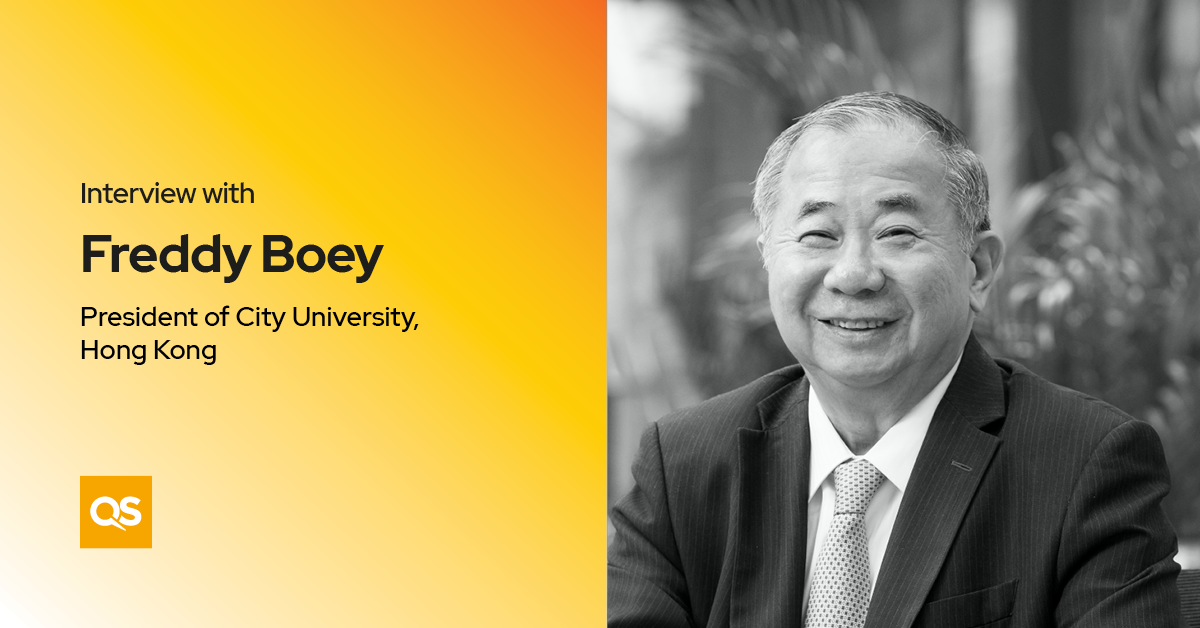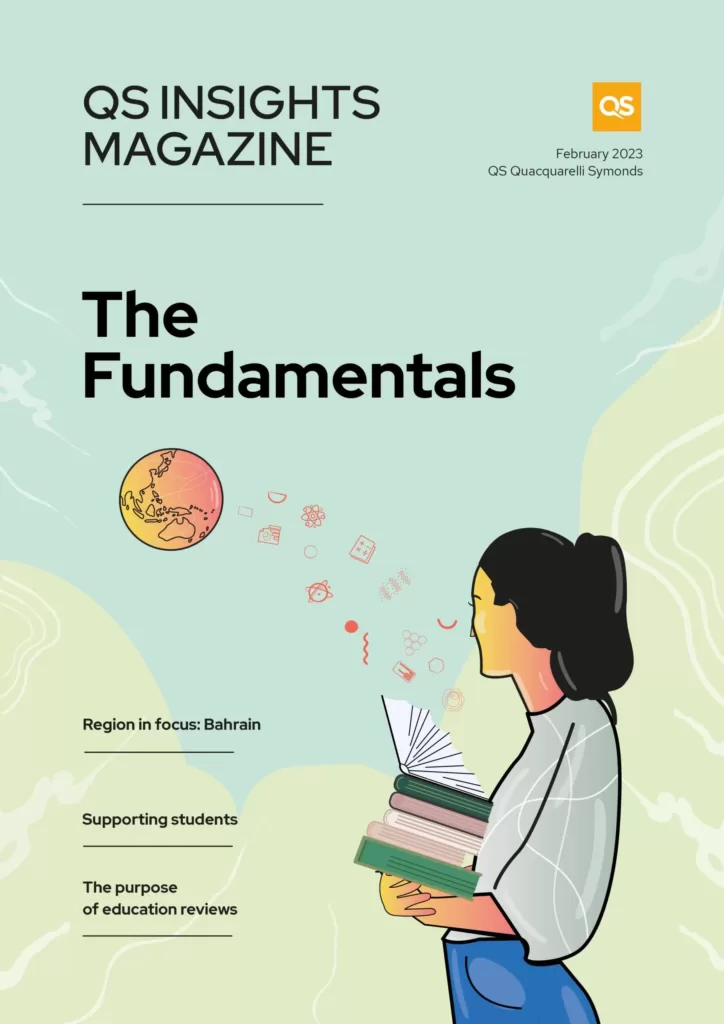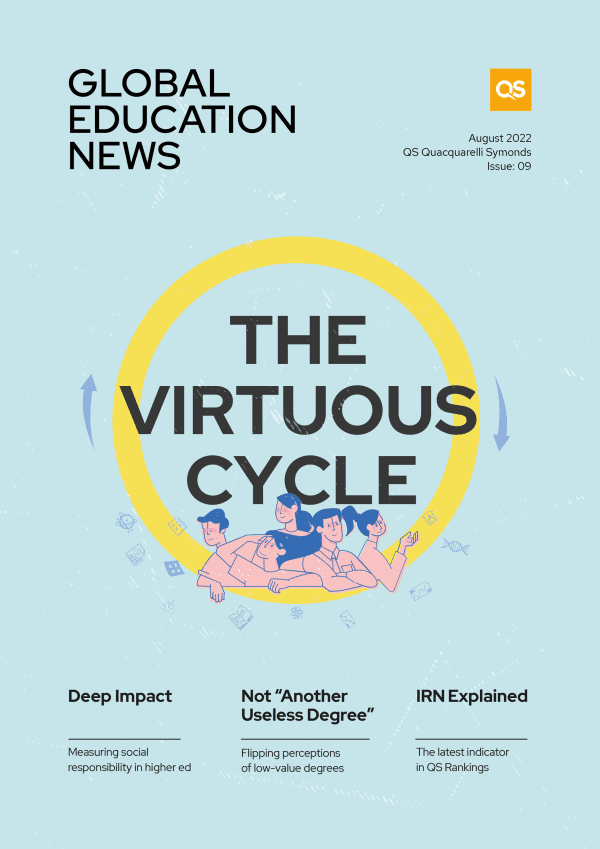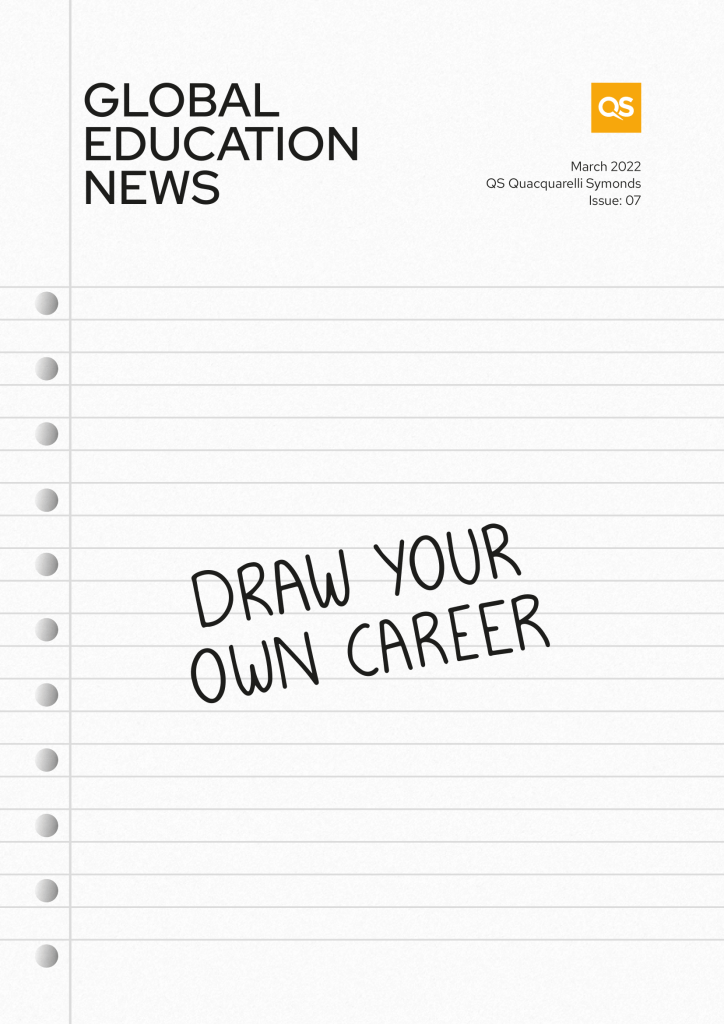
Freddy Boey shares how his educational journey, learning philosophy and childlike sense of curiosity has prepared him for real leadership in higher education.
If you could go back in time to the childhood home of Professor Freddy Boey, it’s likely you’d discover a pile of destroyed toys. “The first thing that I did with the toy was to break it up and find out how it works, not to play with it,” he laughs. “A toy was never meant for playing; it was meant for finding out about the world, what these little gears were for. That’s what I did with all my toys.”
Throughout his career, Professor Boey, who in May was announced as the incoming President at City University of Hong Kong (CityU), has retained this sense of curiosity and wonder, coupled with a delight for deconstructing systems to understand how they work and rebuild them again better than they were previously.
His passion for pulling things apart and making them better has brokered professional success. Highlights of his academic career include more than 20 patents in the biomaterials field, a Faculty of Medicine Fellowship from Imperial College London and Singapore’s highest scientific award, the President’s Science & Technology Medal for lifetime achievement, to name just three.
But that passion and appetite for positive reconstruction extends beyond just his career. As we sit in the lounge of the Shangri-La Hotel in Singapore, he mischievously warns me: “You can ask anything you want, but I will answer with anything I want.”
Learning how to fly
The decades leading up to Professor Boey’s appointment to President at CityU are as unconventional as his relationship to his toys as a child. A former international student in the 80s, long before mass mobility would become commonplace, he continued to push against expectations. Studying a Bachelor of Chemical Engineering at Monash University in Australia, he jokes: “One week was enough to convince me that these guys were absolutely boring.”
The next week, he decided to skip his usual class and instead sit in on the comparatively smaller lesson next door. There, a “very tall gentlemen” regaled the class of 13 or 14, and stated a simple fact that changed the course of Professor Boey’s academic career and life: airplane wings bend.
“That blew my mind,” he says. “Those days you didn’t travel so much and that was it… I just got fired up band inspired.” Professor Boey immediately changed majors into materials engineering, and the lecturer, Emeritus Professor Ian Polmear, would later become a friend to this day.
Inspiration is one part of what Professor Boey calls his “Four I’s of education”; the three pillars, innovation, interaction and inspiration, over the base level, the institution. The base, the university as we currently know it, will continue to exist, Professor Boey says, as long as demand for education remains. He is skeptical that virtual universities will overtake the in-person model. “Where do you find the discipline to wake up in time and do all that stuff?” he asks.
The three pillars sitting atop the base, however, constitute a philosophy towards higher education that rests heavily on intentionality. “A basic principle I have is that we need to educate and not just teach,” he tells QS Insights Magazine. “A lot of people think that by teaching well, you learn well. That is a very presumptuous thing to say”.
“My sense is that learning has become more important than teaching… [and] all universities, whether you’re talking about graduate students or undergraduate, probably need to be aware of this. If not, they’re probably driving the car looking into the rear-view mirror only.”
Asking questions of a structure and looking for new and better ways to solve problems further build on the base institutional model, while remaining true to Professor Boey’s proclivity to break down systems into their parts. The innovation pillar is a shakeup of the status quo. “For thousands of years, we’ve only know of one way of learning – passively listening to a teacher who’s never wrong,” he says.
“The reverence for the master, the teacher, is very good in one sense. There’s virtue in that, giving respect. But when it comes to the world of learning, curiosity-driven learning, innovation-driven learning, that can be a liability… Interpreted broadly, innovative learning has a mindset that encourages and embrace curiosity and asking questions.”
This ambition for education is drawn from personal experience. During high school, Professor Boey says he asked his physics teacher a question related to something he’d read about Albert Einstein. Rather than give an answer, the teacher scolded him for asking something that was not in the syllabus. “It completely put me off,” he recalls. “So, I went to the back of the class, never listened. I mean, he can teach what he wants to teach, and I will learn what I want to learn.”
Driving from the front
Sometime after completing his undergraduate studies in Australia, Professor Boey returned in pursuit of a PhD. Instead of continuing from the airport to his university, he packed up, left and relocated for a year to Doomadgee in the far north of Queensland, roughly 2,200 kilometers northwest of Sydney. The remoteness of the community was such that he recalls driving 200 kilometers just to make a phone call in the 1980s.
During that time, he lived and learned from the Aboriginal people who lived there. “It was part of my education,” he says. Crucially, the experience instilled in him a sense of collaboration and interaction. Professor Boey says those living in the community initially saw him as superior and he had to work to overcome that perception in order to learn.
“It sort of wired me up. For example, for CityU, we’re going to have community engagement as a very strong component of education,” he explains. “[Our students] will be more ready for society.”
As he explains his vision for CityU, the interplay between the three pillars becomes clear. In his eyes, there’s an obvious link between innovation and interaction; reduce the traditional methods of rote learning, as per his ideas on innovation, and enhance interaction between lecturers, students and the community. Professor Boey sums this up by noting the best learning experiences are not what is learned, but how it is learned from others.
“Most students graduate without any clue of how to interact other than say yes to the professor,” he says. This creates a dearth of experience within students for how they interact in the outside world. “The greatest thing in life is not content, it is relational,” he says.
There is a significant emphasis on facilitating enjoyable student and learning experiences. Throughout our conversation, Professor Boey occasionally reflects on exams and grading. At one point, he tells QS Insights Magazine, “Exams stress people… who cares about the exam, who cares about the result, I just want to know”.
Later, when discussing his ideas of community engagement, assessment comes up again for a moment, before being dismissed. His view, it seems, is that assessment comes at the end, not the beginning of establishing a higher education ethos.
“We’ll come to grading,” he says. “I think the focus is… education rather than examination. Don’t kick tires too often.”
Combined, the Four I’s represent a deconstruction and reconstruction of higher education based on student, institutional and community achievement, and a rethinking of what it means to be a university.
In summing up his philosophy, it’s clear what’s at stake for Professor Boey. “[My experiences] convince me that the way we did things in the past was just, [students] learned in spite of, not because of [the traditional university model],” he says. “A young person’s time in university is a precious time of their life.”



